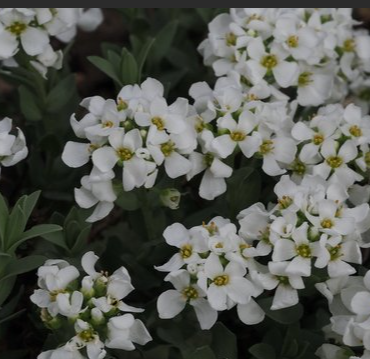Information report for AA5G00075
Gene Details
Functional Annotation
- Refseq: XP_010483951.1 — PREDICTED: NAC domain-containing protein 101-like
- Swissprot: Q9LVA1 — NC101_ARATH; NAC domain-containing protein 101
- TrEMBL: A0A0D3BFT4 — A0A0D3BFT4_BRAOL; Uncharacterized protein
- STRING: XP_010483951.1 — (Camelina sativa)
- GO:0009620 — Biological Process — response to fungus
- GO:0009733 — Biological Process — response to auxin
- GO:0009735 — Biological Process — response to cytokinin
- GO:0009737 — Biological Process — response to abscisic acid
- GO:0009741 — Biological Process — response to brassinosteroid
- GO:0010981 — Biological Process — regulation of cell wall macromolecule metabolic process
- GO:0043068 — Biological Process — positive regulation of programmed cell death
- GO:0045491 — Biological Process — xylan metabolic process
- GO:0045893 — Biological Process — positive regulation of transcription, DNA-templated
- GO:0048759 — Biological Process — xylem vessel member cell differentiation
- GO:0090058 — Biological Process — metaxylem development
- GO:0005634 — Cellular Component — nucleus
- GO:0009531 — Cellular Component — secondary cell wall
- GO:0003700 — Molecular Function — transcription factor activity, sequence-specific DNA binding
- GO:0042803 — Molecular Function — protein homodimerization activity
- GO:0043565 — Molecular Function — sequence-specific DNA binding
Family Introduction
- NAM, ATAF, and CUC (NAC) transcription factors comprise a large protein family. Proteins of this family contain a highly conserved N-terminal DNA-binding domain and a variable C-terminal domain (Xie et al. 2000; Duval et al. 2002; Ernst et al. 2004; Olsen et al. 2005). NAC was originally derived from the names of three proteins, no apical meristem (NAM), ATAF1-2, and CUC2 (cup-shaped cotyledon), that contain a similar DNA-binding domain (Souer et al. 1996; Aida et al. 1997). The early reported NAC transcription factors are implicated in various aspects of plant development. A few examples are NAM from Petunia (Souer et al. 1996) and CUC1-2 (Aida et al. 1997) from Arabidopsis which have roles in controlling the formation of boundary cells of the meristem; NAP (Sablowski and Meyerowitz 1998) from Arabidopsis which acts as a target gene of AP3/PI and functions in the transition between cell division and cell expansion in stamens and petals; and AtNAC1 which mediates auxin signaling to promote lateral root development (Xie et al. 2000). Recently, a few NAC transcription factors were reported to play an essential role in regulating senescence, cell division, and wood formation (Ishida et al. 2000; Takada et al. 2001; Vroemen et al. 2003; Weir et al. 2004; Kubo et al. 2005; Kim et al. 2006; Zhong et al. 2006; Demura and Fukuda 2007; Ko et al. 2007; Mitsuda et al. 2007; Zhong et al. 2007).
- NAM, ATAF, and CUC proteins were also found to participate in plant responses to pathogens, viral infections, and environmental stimuli (Xie et al. 1999; Ren et al. 2000; Collinge and Boller 2001; Kim et al. 2007). In Arabidopsis, three NAC genes, ANAC019, ANAC055, and ANAC072, were induced by drought, salinity, and/or low temperature (Tran et al. 2004), and the transgenic Arabidopsis plants overexpressing these genes showed improved stress tolerance compared to the wild type (Tran et al. 2004). Furthermore, proteins of these genes can bind to a ciselement containing CATGTG motif (Tran et al. 2004).
Literature and News
Sequences
CDS Sequence:
- >AA5G00075|Aethionema_arabicum|NAC|AA5G00075
ATGGAGAGTATGTCACATATACCGCCCGGTTATCGATTTCATCCGACCGACGAAGAACTTGTTGACTATTATCTAAAGAAGAAAGTTGCATTTCCTTCTTTGCAAGTTGATGTCATCAAAGATGTTGATCTTTACAAAATTGAACCTTGGGATATTCAAGAATTATGTGGAAGAGGAACCGGAGAAGAAAGAGAATGGTATTTTTATAGTCACAAAGACAAAAAATACCCAACCGGTACACGAACCAATAGAGCAACCGGTTCTGGTTTTTGGAAAGCAACCGGTCGAGACAAAGCCATTTATTCAAAACAAGAACTTGTCGGTATGAGAAAAACCTTAGTTTTTTACAAAGGTCGAGCTCCAAATGGTCAAAAATCAGATTGGATTATGCACGAATATCGTCTAGAAACTGATGAAAATGGACCGCCACATGAAGAAGGTTGGGTCGTTTGTAGAGCATTTAAAAAAAAATTAACCATAAATTATAATAATAATAATTCAAGAACCATGATGATGGGATCATCATCAAATCAAGAATCTACTTGGTTTGGACAACAACATATGGATGTTAATAATGGTAATAATAATTATTATCATCTTCCTGATCTTGAAAGTCCAAGAATGTTACCACCATCATCATCATCATCATCACATCATCATAATCATAATGATGATGTTTATGGTAGTATACTAAATACTATTAATAATAATCAAATGGTTATGATGAATAATCATCATCAAGATGATGATAATGATGATGATAATAATGATCAAGTTATGGATTGGCAAACTTTGGATAAGTTTGTTGCGTCGCAATTAATAATGAATCAAGGACATATTAATGAAGAAGATCAAATTAATAAAGATTTATTATCGAATTCGTCATTGCAGCAGCATCAAATTCAAACGTTTCAGAATTTATCTGAAGAACAACAAAGAATGGTTTCTATGAATGTTTCATCTTCTTCAACTCCATCTTCTTTTTACTCATGGTCTCAAAATACACATTTA
Protein Sequence:
- >AA5G00075|Aethionema_arabicum|NAC|AA5G00075
MESMSHIPPGYRFHPTDEELVDYYLKKKVAFPSLQVDVIKDVDLYKIEPWDIQELCGRGTGEEREWYFYSHKDKKYPTGTRTNRATGSGFWKATGRDKAIYSKQELVGMRKTLVFYKGRAPNGQKSDWIMHEYRLETDENGPPHEEGWVVCRAFKKKLTINYNNNNSRTMMMGSSSNQESTWFGQQHMDVNNGNNNYYHLPDLESPRMLPPSSSSSSHHHNHNDDVYGSILNTINNNQMVMMNNHHQDDDNDDDNNDQVMDWQTLDKFVASQLIMNQGHINEEDQINKDLLSNSSLQQHQIQTFQNLSEEQQRMVSMNVSSSSTPSSFYSWSQNTHL
